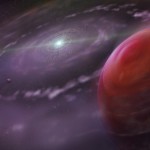W. M. Keck Observatory press release…
Scientists from University of California, Berkeley, and University of Hawaii, Manoa, have statistically determined that twenty percent of Sun-like stars in our galaxy have Earth-sized planets that could host life. The findings, gleaned from data collected from NASA’s Kepler spacecraft and the W. M. Keck Observatory, now satisfy Kepler’s primary mission: to determine how many of the 100 billion stars in our galaxy have potentially habitable planets. The results are being published November 4 in the journal Proceedings of the National Academy of Sciences.

“For NASA, this number – that every fifth star has a planet somewhat like Earth – is really important, because successor missions to Kepler will try to take an actual picture of a planet, and the size of the telescope they have to build depends on how close the nearest Earth-size planets are,” said Andrew Howard, astronomer with the Institute for Astronomy at the University of Hawaii. “An abundance of planets orbiting nearby stars simplifies such follow-up missions.”
Continue reading “One in Five Stars Has Earth-sized Planet in Habitable Zone”
